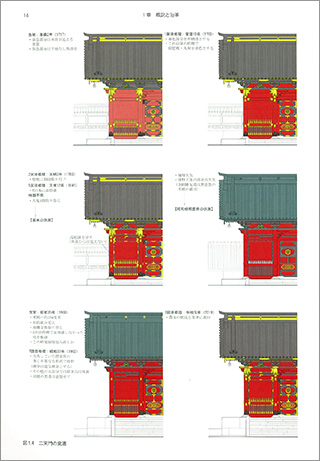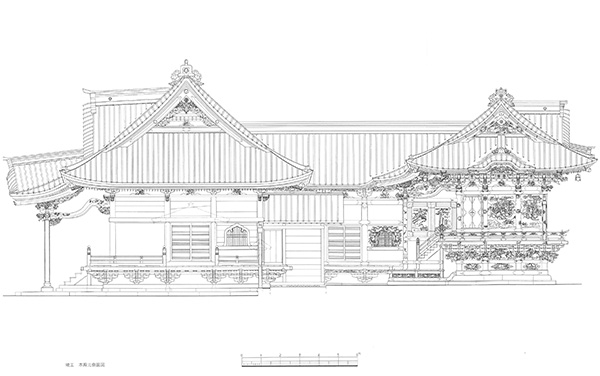The Library thanks Eisuke Nishikawa for his contribution to January’s Resource of the Month. Mr Nishikawa, who works as a conservation architect at the Japanese Agency for Cultural Affairs, joined ICCROM in 2017 for a two-year secondment. In this article, he presents one of the most important and unique treasures in our Library: the collection of Japanese Conservation Reports. These non-commercial publications are extremely difficult to find outside of Japan and the ICCROM Library is very proud and grateful to our Japanese partner for this continuous and important donation.
The Japanese Conservation Report collection in the ICCROM Library: an introduction
Conservation reports published during the year in Japan are regularly sent to the ICCROM Library. This practice started in the 1970s when Bernard Feilden was Director-General of ICCROM, with the first 30 reports sent from the Cultural Property Division of Built Heritage of the governmental Agency of Cultural Affairs of Japan. In 1980, Cevat Erder, Director-General at that time, wrote a letter asking the Agency for Cultural Affairs to send the reports regularly. Currently, the Library’s collection counts about 350 reports.
The reports are very important records of the preservation of built heritage in Japan. The first one was produced on the occasion of the conservation and restoration of the South Great Gate of Todai-ji temple in 1930. Later, when large-scale conservation and restoration of the Horyu-ji temple started in 1934, it became routine to publish a report each time when carrying out substantial conservation work of protected cultural property buildings in Japan.
(Click to enlarge)
Many of the Japanese cultural property buildings are wooden, and it is common to dismantle the whole or a part of the building during large-scale conservation and restoration. It is required to produce extensive documentation before starting conservation, and, in accordance with the progress of dismantling, to investigate carefully the damage situation, the construction technique, as well as the history of changes made to the building after its original construction, etc. Based on the result of the investigation, the conservation policy is reviewed in relation to whether it is better to restore the building to the original state or to any other state in the building’s history. One of the main objectives of the reports is to inform the future generations about the investigation results and the examination process.
The content of the report is structured according to the following sections: “Outline of Building”, “Outline of Project”, “Investigation Items”, “Historical Sources”, “Photos and Drawings”. An “English Summary” is attached at the end. The drawings are hand-drawn using traditional ruling pens (with twin steel chop blades that hold the ink). The drawings and reports are preserved permanently by the Agency for Cultural Affairs.
These surveys and reports are carried out by conservation architects, and the skill of the conservation architects themselves have also been preserved as the “Selected Preservation Technology” by the Agency for Cultural Affairs. In addition, the skill of the conservation architects is included in “Traditional skills, techniques and knowledge for the conservation and transmission of wooden architecture in Japan”, which has been inscribed recently (in December 2020) in the Representative List of the Intangible Cultural Heritage of Humanity of UNESCO.
Though the reports are written mostly in Japanese, as mentioned above, they contain English summaries and are richly illustrated with photographs and drawings. We invite you to consult them when visiting the ICCROM Library and we hope they will awake your interest!
(Click to enlarge)
Images: (Top) Documentation of modification history and colouring investigation of Yusho-in. (Bottom) Hand-drawn drawing of Kangi-in. The figures in this article are kindly provided by The Japanese Association for Conservation of Architectural Monuments.


